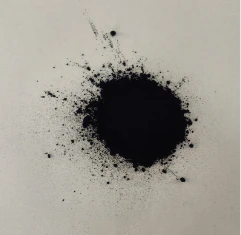Traditional Chinese Indigo Textile Inspirations from Japanese Techniques
The Rich Heritage of China-Japanese Indigo Cloth
Indigo cloth has long held a significant place in the textile traditions of both China and Japan. The dyeing techniques and fabric weaving methods reflect centuries of cultural exchange, innovation, and craftsmanship. This article explores the origins, characteristics, and cultural significance of China-Japanese indigo cloth, highlighting how these countries have influenced one another through textile arts.
Historical Context
The use of indigo dye dates back thousands of years, with archaeological evidence suggesting its cultivation in ancient China around 2600 BC. The indigo plant, known scientifically as Indigofera, produces a deep blue dye that has been cherished for its vibrant color and durability. The traditional methods of dyeing with indigo were refined over centuries, leading to the creation of stunning textiles that were used for clothing, household items, and ritual purposes.
In Japan, indigo dyeing gained popularity during the Edo period (1603-1868), when the country experienced significant economic and cultural growth. The Japanese developed their own unique techniques in indigo dyeing, notably the shibori method, which involves binding, stitching, or folding the fabric to create intricate patterns. This method showcases the Japanese aesthetic, emphasizing imperfection and the beauty of nature.
Techniques and Characteristics
China-Japanese indigo cloth often features a blend of traditional Chinese and Japanese techniques, resulting in beautifully intricate designs and rich textures. In China, traditional dyeing methods typically involve soaking the fabric in indigo to achieve deep hues. Chinese artisans also use batik, a wax-resist dyeing technique, which allows for precise patterns and motifs.
On the other hand, Japanese artisans have perfected the art of shibori, which incorporates various folding and binding methods to create complex patterns. The interplay between these techniques has resulted in a fusion of styles that is appreciated in both cultures.
china japanese indigo cloth

One of the most appealing aspects of indigo cloth is its sustainability. The indigo plant is a natural source of dye, and the dyeing process is often less harmful to the environment compared to synthetic alternatives. As global interest in sustainable fashion grows, the demand for traditional indigo cloth has surged, allowing artisans from both countries to continue their legacy while promoting eco-friendly practices.
Cultural Significance
Indigo cloth carries deep cultural significance in both China and Japan. In China, indigo-dyed fabrics are often associated with rural traditions. The deep blue color symbolizes protection and prosperity, making it a popular choice for clothing and decorative items used during festivals and celebrations. Additionally, these textiles often feature motifs that represent various elements of Chinese folklore, such as dragons, phoenixes, and floral patterns.
In Japan, indigo cloth is also deeply woven into the cultural fabric of society. The color blue in Japanese culture represents elegance and tranquility. Historically, indigo-dyed clothing was worn by common folk due to its affordability and durability. Today, indigo cloth is still celebrated in various forms, from traditional garments like kimono to modern fashion pieces.
The revival of interest in traditional textiles has also played a crucial role in preserving artisanal skills and promoting cultural heritage. Workshops and exhibitions dedicated to indigo dyeing and cloth weaving are becoming more frequent, fostering a greater appreciation for the craftsmanship involved.
Conclusion
The journey of China-Japanese indigo cloth illustrates the vibrant history of cultural exchange and artistic collaboration between these two nations. With its rich hues, intricate patterns, and sustainable practices, indigo cloth continues to be a symbol of heritage and creativity. As both countries strive to preserve and innovate their textile traditions, indigo cloth not only serves as a link to the past but also a bridge to the future, embodying a shared appreciation for beauty, quality, and sustainability. Through its timeless appeal, indigo cloth remains relevant in contemporary design, evoking a sense of cultural pride and continuity.
-
Sulphur Black Dyes in Daily Use
NewsMay.07,2025
-
Indigo Dyeing for Daily Life
NewsMay.07,2025
-
Indigo Dye Production and Its Growing Demand
NewsMay.07,2025
-
Color That Lasts
NewsMay.07,2025
-
Bromo Indigo for Modern Use
NewsMay.07,2025
-
Blue From Nature
NewsMay.07,2025
-
The Timeless Color in Fashion and Textiles
NewsApr.10,2025

Sulphur Black
1.Name: sulphur black; Sulfur Black; Sulphur Black 1;
2.Structure formula:
3.Molecule formula: C6H4N2O5
4.CAS No.: 1326-82-5
5.HS code: 32041911
6.Product specification:Appearance:black phosphorus flakes; black liquid

Bromo Indigo; Vat Bromo-Indigo; C.I.Vat Blue 5
1.Name: Bromo indigo; Vat bromo-indigo; C.I.Vat blue 5;
2.Structure formula:
3.Molecule formula: C16H6Br4N2O2
4.CAS No.: 2475-31-2
5.HS code: 3204151000 6.Major usage and instruction: Be mainly used to dye cotton fabrics.

Indigo Blue Vat Blue
1.Name: indigo blue,vat blue 1,
2.Structure formula:
3.Molecule formula: C16H10N2O2
4.. CAS No.: 482-89-3
5.Molecule weight: 262.62
6.HS code: 3204151000
7.Major usage and instruction: Be mainly used to dye cotton fabrics.

